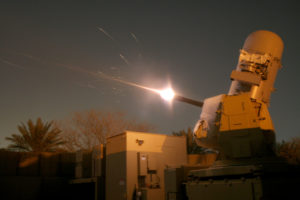
U.S. military forces intercepted a rocket using the Counter-Rocket, Artillery, Mortar (C-RAM) system during an early Monday morning attack aimed at Hamid Karzai International Airport in Kabul, occurring as withdrawal operations in Afghanistan were set to conclude later in the day A total of five rockets were aimed at the airfield, Pentagon officials told reporters, with the Raytheon Technologies [RTX]-built C-RAM Intercept Land-based Phalanx Weapon System taking out one rocket, while three others landed outside the airfield and the remaining…

 By
By 











